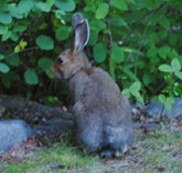Rustic Twig Fences
Create your own charming and primitive twiggy enclosure
Jacki Cammidge is a participant in the Amazon Services LLC
Associates Program, an affiliate advertising program designed to
provide a means for sites to earn advertising fees by advertising and
linking to amazon.com. Other links on this site may lead to other affiliates that I'm involved with, at no extra cost to you.
Rustic twig fences take many forms. They are all built from natural materials, of course, but the structure itself and the methods used to build them are unique to each type.
Some types of twig fencing that you may use in a garden setting are the palisade style, picket and lattice.
All these are useful in different styles of garden.
Choosing the right rustic garden fence design is an important decision.
Look at the style, height, purpose and construction of each type to make the right choice.
Some rustic fences are built to keep animals out of the garden - deer require a fence over 2.2 meters (8'+) high to discourage them and rabbits are deterred by lining the base of the fence with small chicken wire up to 34-50cm (15" - 30") high.
Don’t use any kind of flexible netting like fishing nets as the rabbits will
attempt to push through and get entangled, with bad results all round. The goal is to discourage them, not kill them.

You may want a rustic twig fence for privacy from neighbors which will need to be less open in design, or for vines to grow on requiring a sturdier construction.
Decide on the purpose for your rustic twig fence, and build accordingly.
There are two kinds of fence in this picture; in the foreground is a post and rail fence, in the background is a Russel fence.
Another image of a Russel fence. This is typically built on rocky or sloping ground, as it doesn't require fence posts in the ground. It just sits on top.
Snake fence is long lasting and durable - this one keeps cows out when they come back in off range. If a log is knocked off the top, you just put it back on. Each log is notched to fit the one below.
 Dead Hedge beside a walkway
Dead Hedge beside a walkwayAnother popular lower fence style is a dead hedge. This is where you would pound in two short posts, then stack dead or dying branches in between them, in sequence.
So you would have several double posts, filling them as your branches come available.
It's a good way to get rid of thorny material such as roses or other prickly branches, and prevent them from re-rooting if they are considered invasive species.
 Dead Hedge about a foot tall curving up to the driveway
Dead Hedge about a foot tall curving up to the drivewayMost dead hedges would be shorter, rather than taller. They can be more of a visual barrier, than something to keep out animals.
Keep adding to them as the materials come available, by wiring taller sticks to the uprights before contributing more dead sticks.
Rope certainly comes in handy, as we found when we wanted to build a fence for our puppy. See how we made a rope and twig fence to keep him in, while giving a nod to that rustic feel.
Here are some things to take into consideration when designing your rustic twig fence:
- The available materials for building the twig fence – do you have access to a large amount of twigs, or will you have to bring them in?
- Height and length required for the fence. Accurate measurements will help you make the right choice of fence design and the supplies needed.
- Style of the garden and house. Make your choice based on which style will suit the dwelling and other buildings. Keep to a theme, and avoid the temptation to add one of every single design you see.
Supplies you'll need to make your own rustic twig fences;
Tie wire to attach branches and twigs together.
Pliers to use to prevent damage to your hands.
Saw to cut the branches.
Gloves to protect your hands.
Learn what it takes to be creative - we all have the gene but how do we develop it? Get the free guide!
Fill in the form below for your copy;
(Don't be disappointed - use an email address that will accept the free download - some .aol email addresses won't.
If you don't see your download within a few minutes, try again with another email address - sorry for the bother.)



















